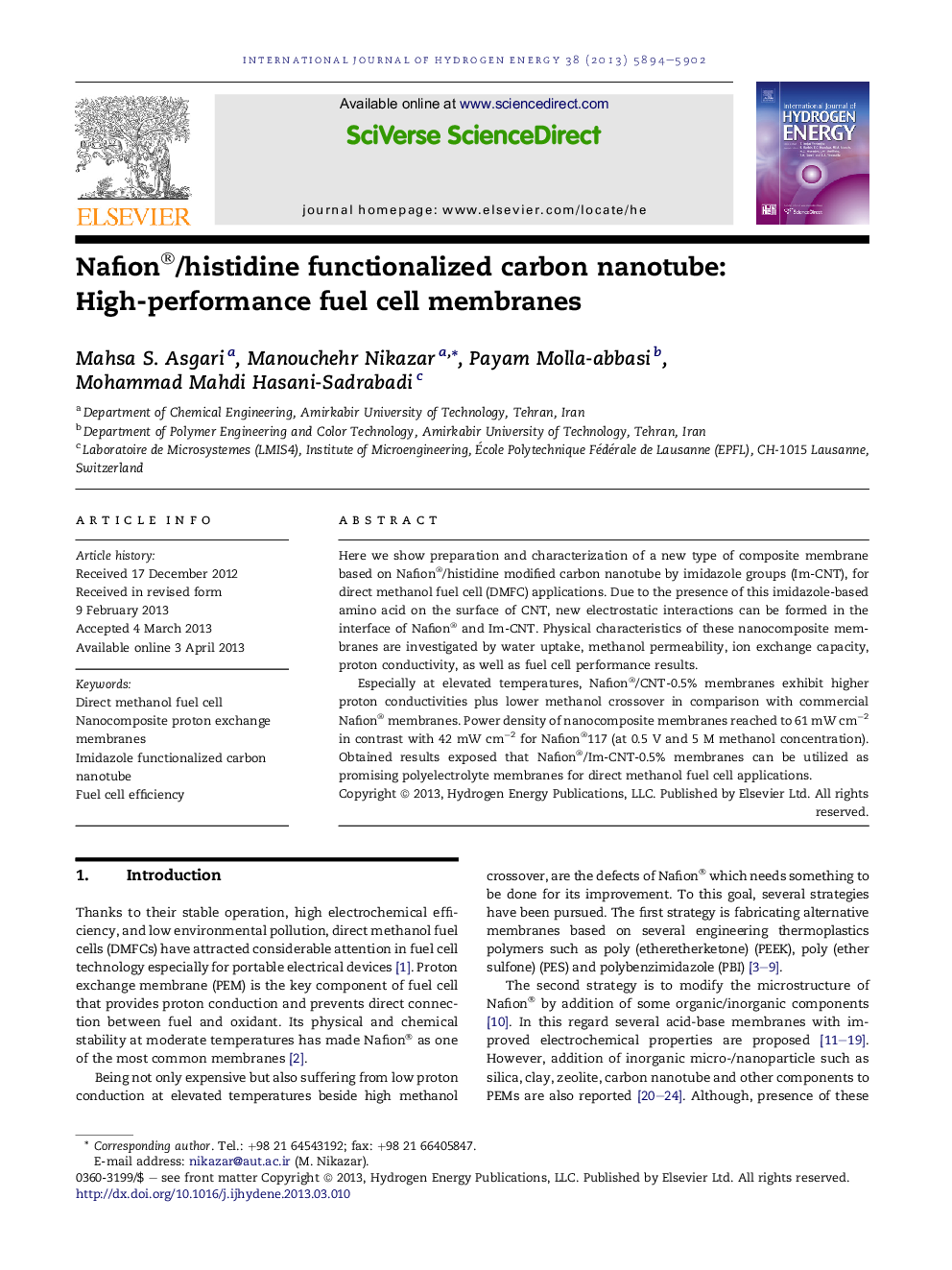| Article ID | Journal | Published Year | Pages | File Type |
|---|---|---|---|---|
| 1281699 | International Journal of Hydrogen Energy | 2013 | 9 Pages |
•Fabrication of new composite membrane for direct methanol fuel cell application.•Higher proton conductivity compared to Nafion especially at elevated temperatures.•Enhancement of the proton transport by Grotthuss-type mechanism.•Lower methanol permeability of this new membrane compared to Nafion membranes.•Higher open circuit voltage and maximum power density compared to Nafion.
Here we show preparation and characterization of a new type of composite membrane based on Nafion®/histidine modified carbon nanotube by imidazole groups (Im-CNT), for direct methanol fuel cell (DMFC) applications. Due to the presence of this imidazole-based amino acid on the surface of CNT, new electrostatic interactions can be formed in the interface of Nafion® and Im-CNT. Physical characteristics of these nanocomposite membranes are investigated by water uptake, methanol permeability, ion exchange capacity, proton conductivity, as well as fuel cell performance results.Especially at elevated temperatures, Nafion®/CNT-0.5% membranes exhibit higher proton conductivities plus lower methanol crossover in comparison with commercial Nafion® membranes. Power density of nanocomposite membranes reached to 61 mW cm−2 in contrast with 42 mW cm−2 for Nafion®117 (at 0.5 V and 5 M methanol concentration). Obtained results exposed that Nafion®/Im-CNT-0.5% membranes can be utilized as promising polyelectrolyte membranes for direct methanol fuel cell applications.
